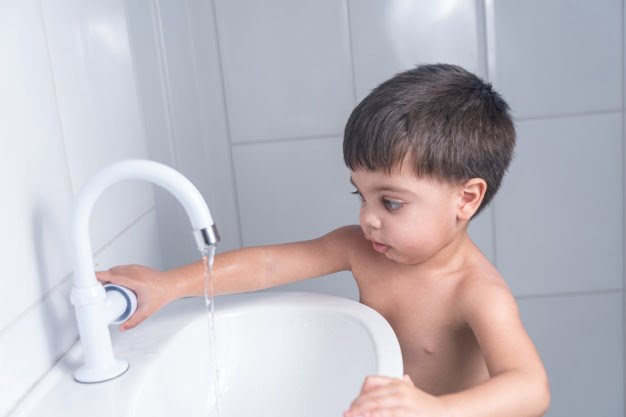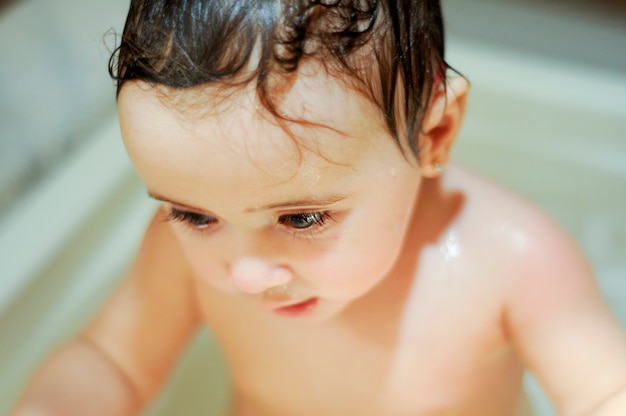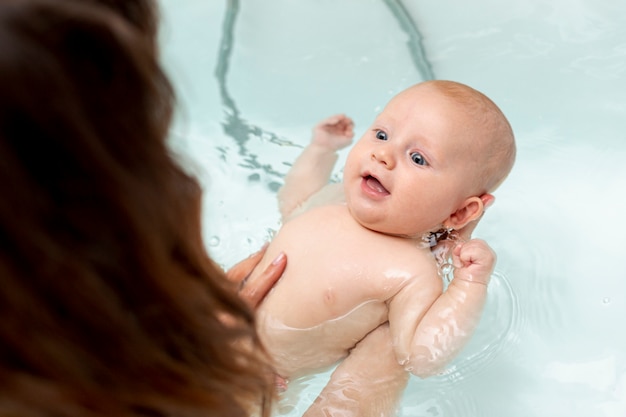Potty training tips that I followed for my toddler
- Published on:
- Last update: 09 October 2023

Potty training tips
Regardless of what you think, the process of potty training does not happen overnight as per my observation and experiences. As a mother, I feel potty training requires patience and practice.
Tips to potty train your little ones
First and foremost, check if your toddler is old enough to potty train. Ideally, potty training gets started between 18 and 30 months. Does your toddler stays dry for at least 2 hours and after naps. Find out if your toddler becomes aware when he/she becomes wet. Once your toddler starts expressing his/her discomfort of being wet, potty training can be started as soon as possible.

As a part of introducing your child to potty training, talk about it to your toddler occasionally. Familiarize “potty training” through books or videos before buying the right potty chair. The right child-size potty chair helps your toddler to be comfortable while practicing potty training. If possible, personalize it with favorite pictures or toys. Once the personalized potty chair is decorated, make your toddler sit on it, maybe every 2 hours. Then gradually get your child to remove his/her pants first and then sit on the potty chair. Train him/her to sit on the chair with the pants down whenever he/she has to go for a pee or poo.
Once the toddler gets familiarized with the potty chair in the day, start practicing the potty training in the night so that they get a comfortable sleep during night time. Thus, it is advisable to limit the fluids of your toddler after evening snacks to keep their tummies light before they go to sleep.
While potty training, make it a point that you encourage your child. Your toddler will always look up to you for appreciation, so just give him/her that when the potty training is done right. Otherwise, be patient with him/her with gentle tips on how to go pee or poo the right way while reminding your toddler that he or she is a “big kid” now. Teach your child about basic hygiene including flushing, cleaning, and washing hands regardless of whether your toddler actually went to the toilet or not.
Ascertain if it is the right time and start potty training your toddler
Be aware of your child’s mannerisms. Observational studies show that though most parents start potty training their child at an age of 2, some children will become ready only by the age of 4. The toddler should be able to walk and sit down and this requires a certain amount of physical and cognitive development. The proper development ensures that the toddler can build up the ability to pull his/her pants down unassisted, like a “big kid”.
Toddlers are always curious about what others do and how things get done. One sign that your child is ready to potty train is when he/she starts imitating others in their washroom habits and expresses his/her need to use the toilet for pee or poo. After a certain age, the child showcases good bladder control by keeping himself/herself dry for a period of about 3 to 4 hours.
In traditional villages, potty training is carried out even before the child can walk properly. Western culture uses diapers more often than Indians as in India, people are comfortable with not using diapers and just using water for cleaning the pee or poo.

Your toddler often indicates the need to use the toilet by making grunting sounds. Once a baby crawls up to the washroom, the parents identify the need to go for a pee or poo and helps out with the rest. Usually, mothers hold their toddlers over a sink or toilet and give verbal clues to either pee or poo as the needs of the toddler’s body. The toddlers will take their time to start using the commode but might need help in removing their pants for quite some time. Toddlers that start with this technique are often potty trained well within 15 to 18 months. Although this is a quicker approach, you still need to show patience with your toddlers until they become familiar and comfortable in using a washroom effectively.
Regarding the equipment used for potty training, most urban parents opt for a western style. You should ensure that you have the right equipment to do the potty training if you choose to favor the western style. Either purchase a child-sized potty or get a special seat that can be attached over the regular potty seat. Make sure that the toddler feels comfortable using the equipment.
Once everything is set, try and explain the process to your child. Seat him/her on the potty without a diaper or nappy to get him/her used to the process. Try explaining to him/her what to do when he/she has to pee or poo. Handle his/her mistakes by calmly explaining everything. Just interact with your child to ease away any kind of pressure he/she feels. Give ample time to your toddler for mastering the process, and getting used to his/her bladder movements.
Dress your child in clothes that he/she can easily disrobe while he/she wants to use the potty. Talk to your toddler about basic hygiene tips like washing his/her hands and wiping himself/herself. Take note of all the little achievements and make him/her feel validated. Encourage your child to be independent by telling him/her to use the potty whenever the need arises.
As per my observation, night training takes a bit more time than day training. Assure your child that, if he/she needs to use the potty any time in the night, he/she can do so with your help. A portable potty can be used, which can be kept near your child’s bed. Get a waterproof mattress for easier cleaning.
In a nutshell, successful potty training happens with ample persistence and should be started only when you feel that your toddler is ready. The whole process might take a bit more time than anticipated. Also remember that the duration of the training might differ from one toddler to another depending on the pace of their learning.
Want to learn how this mom effectively increased her child’s appetite? Click here to learn her 6 tips!
Share this post:

